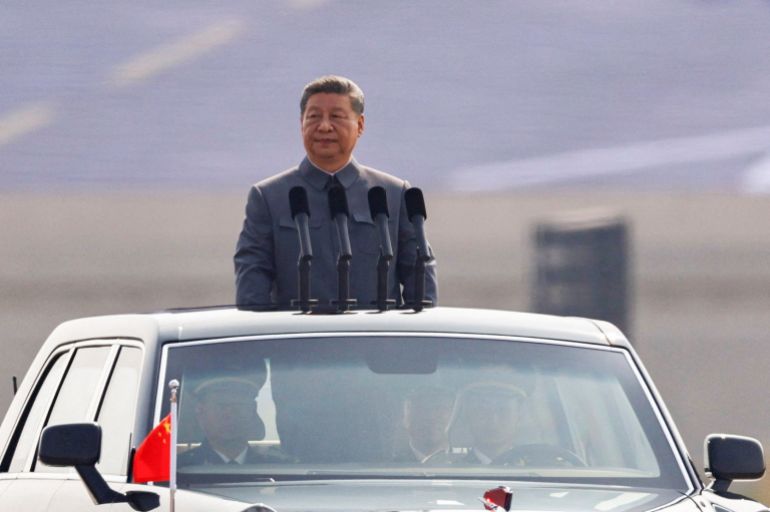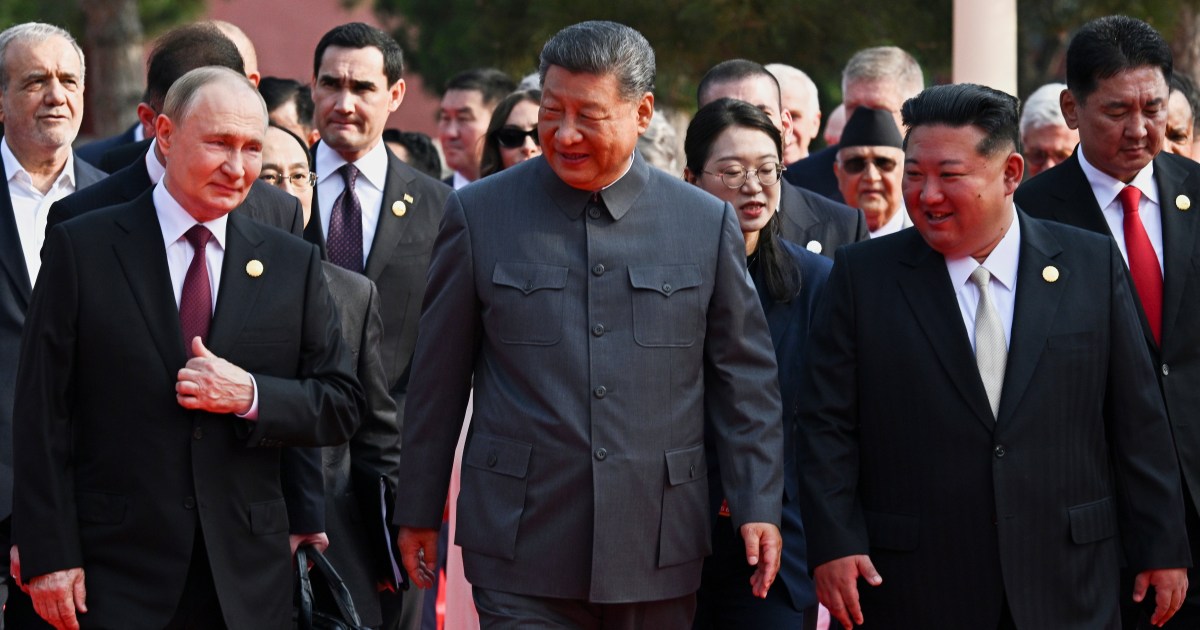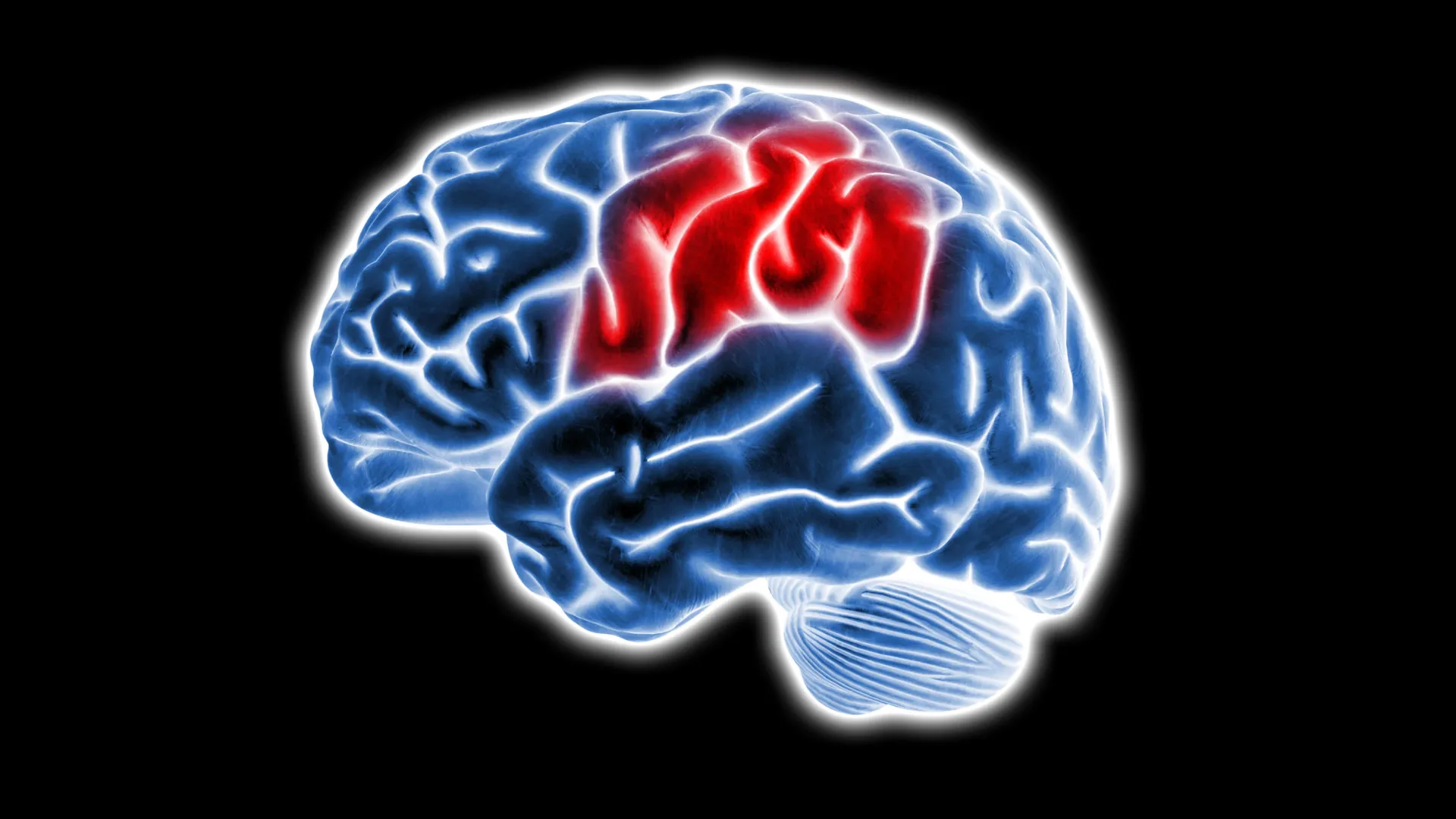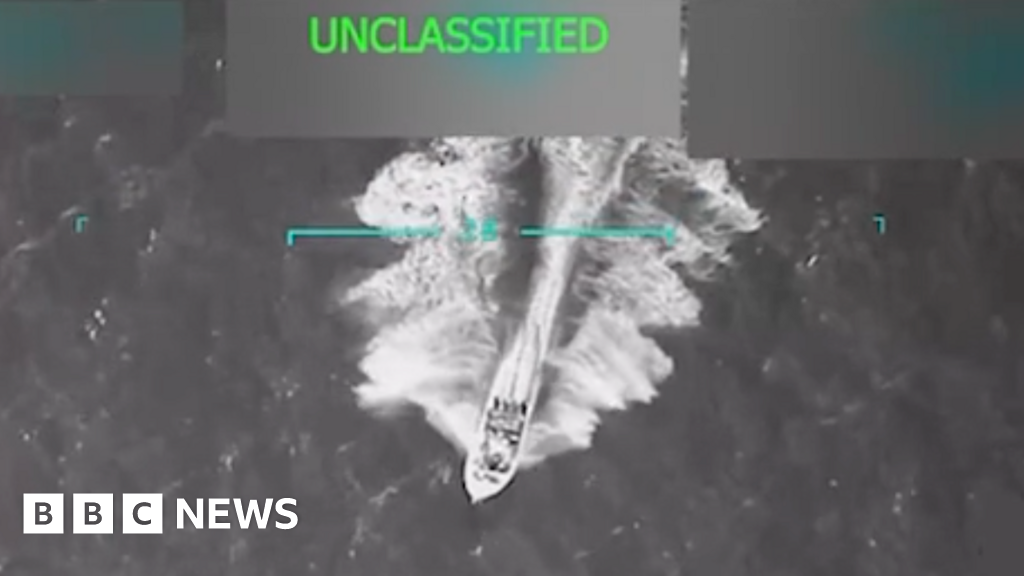China flexed its military muscle at a huge military parade in Beijing to mark 80 years since the end of World War II, displaying its latest generation of stealth fighters, tanks and ballistic missiles amid a highly choreographed cast of thousands.
The parade through Tiananmen Square on Wednesday morning was overseen by Chinese President Xi Jinping, who is also the head of the country’s military and the Chinese Communist Party.
After greeting foreign leaders, including Russian President Vladimir Putin and North Korean leader Kim Jong Un, Xi moved on to welcome Chinese military veterans before taking his place at the centre of the event.
Putin and Kim were just some of the 26 world leaders who attended the parade, in a group that was drawn from mostly non-Western countries.
Xi watched the parade from the Gate of Heavenly Peace, before making a speech to the 10,000 assembled members of the People’s Liberation Army (PLA), Navy and Air Force, stating that China would continue to “adhere to a path of peaceful development”.
As he spoke of China’s victory over “Japanese aggression” in the “world anti-fascist war”, he thanked foreign governments for their help. Xi did not mention the United States by name, despite the country’s prominent role in ending World War II.
The Chinese leader said that lessons from the war were as relevant now as ever.
“Humanity is again faced with a choice of peace or war, dialogue or confrontation, and win-win outcomes or zero-sum games,” Xi said, according to an official readout of his speech.
“The Chinese people will stand firmly on the right side of history and on the side of human progress, adhere to the path of peaceful development, and join hands with the rest of the world to build a community with a shared future for humanity,” he said.
He also stressed that the military continues to play a vital role in China’s national rejuvenation – one of the ideological pillars of the Chinese Communist Party and Xi’s official doctrine and worldview.
“It really is difficult to understate how much of this is a part of the national psyche, the psyche of the Communist Party that, in the previous 100 years [before World War II], China was repressed, invaded and humiliated by foreign forces,” Al Jazeera’s correspondent Katrina Yu said from Beijing.
“I think Xi Jinping [is] making a point there that that will never happen again,” Yu said.
Dressed in a grey Mao suit, Xi then toured Tiananmen Square, standing in a vehicle and greeting troops with salutations, before the parade finally commenced down Beijing’s Chang’an Avenue, a major thoroughfare in the Chinese capital.

China’s most advanced weaponry took front and centre in the parade, including a new generation of hypersonic missiles, ballistic missiles, underwater drones, fighter jets, early warning aircraft and aircraft jamming systems.
Long-range intercontinental missiles – capable of delivering nuclear warheads – were also given a prominent position in the parade alongside tight formations of military personnel marching in unison before an audience of 50,000 observers.
“For Xi, the point is to reinforce the impression that the [People’s Republic of China, PRC] has arrived as a great power under his leadership,” said Ian Chong, a political scientist at the National University of Singapore.
“Another is the array of leaders at the parade, which suggests that the PRC cannot be isolated, and is unafraid of pressure and bullying, particularly from the United States,” he said.
Above the parade, the Chinese air force staged a flyover, including helicopters with banners declaring, “Justice will prevail”, “Peace will prevail”, and “The people will win”.
Responding to the military parade on social media, as it got under way, US President Donald Trump questioned whether Xi would acknowledge the role the US played in World War II, before wishing him well.
“The big question to be answered is whether or not President Xi of China will mention the massive amount of support and ‘blood’ that The United States of America gave to China in order to help it to secure its FREEDOM from a very unfriendly foreign invader,” Trump wrote.
“Many Americans died in China’s quest for Victory and Glory… May President Xi and the wonderful people of China have a great and lasting day of celebration.”
Trump also added: “Please give my warmest regards to Vladimir Putin, and Kim Jong Un, as you conspire against The United States of America.”









